Yoga
Best Travel Yoga Mat UK
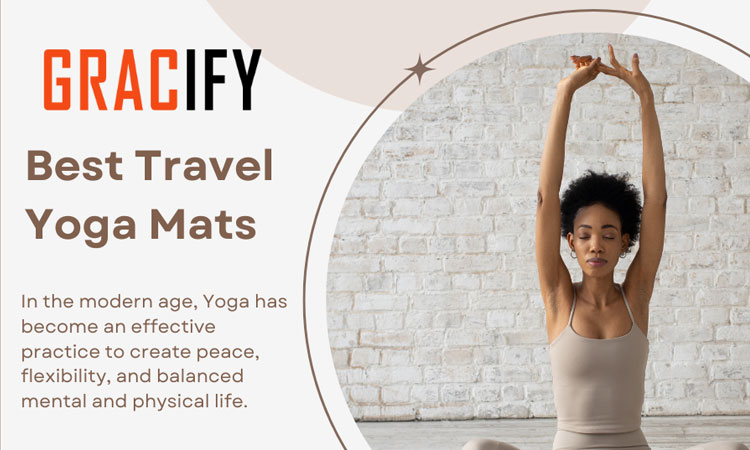
Best Travel Yoga Mat UK: In the modern age, Yoga has become an effective practice to create peace, flexibility, and balanced mental and physical life. It provides a sense of relief from the tensions of our hectic routine life. Yoga mats make our practice easier. We found these mats helpful in the tough and stretchy movements due to their specific structure.
If you travel frequently and do not want to create a gap in your practice then it is necessary to have a reliable travel yoga mat. In this guide, we will deeply explore the best travel yoga mats and also provide sufficient information about the leading brands available in the UK.
Things to Consider Best Travel Yoga Mat UK
When you are moving towards choosing the best travel yoga mat uk, there are some important factors that you must keep in mind because all yoga mats are not of the same quality. Specially travel yoga mats have some important and different traits than the other ones.
1. Weight and Portability
When you are going to select your best travel yoga mat, the first and foremost thing is its weight. A travel mat must be lightweight so it becomes easy to carry it anywhere. If you have a lightweight and high quality travel mat then it is convenient to roll up and it will not take so much space in your luggage. Ideal travel yoga mats typically weigh between 1.5 to 2.5 pounds which are basically in demand.
Now modern yoga mat companies designed them with a carrying strap or bag just to make them more reliable for you. This feature is not only useful in their easy transport but also remarkable in its protection. Its smart size prevents to create a mess in your suitcase.
2. Thickness and Cushioning
In the common observation, the thicker yoga mats offer more comfort and support as compare to the thinner ones. They are typically suitable for those who need extra padding for their joints on hard surfaces. On the other hand, the travel yoga mats are often thinner than the standard ones because of their different demands and needs.
As we already discussed the travel yoga mat must be thin and lightweight to resolve the problem of carrying it. The best travel yoga mats tend to range from 1.5mm to 5mm thick which makes them easy to transport without any discomfort.
3. Grip and Stability
Another important and considering factor about the best yoga mat is its grip. It must be provided with a stable and non slippery surface that can improve your performance even if you are drenched in sweat. This feature will be very effective in building up your confidence while you are practicing more dynamic or sweaty styles of yoga like Vinyasa or Ashtanga. It prevents us from the risk of injuries.
Most of the yoga mats are prepared from high-quality, non-toxic materials such as thermoplastic elastomer (TPE), natural rubber, or PVC that offer superior grip. These types of surfaces reduce the tension to slip and provide good and reliable support and grip to your feet and hands. You will feel secure during your practice, no matter the environment.
Often the best travel yoga mats feature textured surfaces to enhance grip, then it does not matter whether you are practicing on slick hotel floors or outdoor surfaces.
4. High quality material and Eco-friendliness
Another considerable factor about the travel yoga mat is that it must be made of high quality material and durable which must withstand for a long time. A traveling mat does not only face the frequent rolling and folding but also bears different environmental changes. When you have to carry on your yoga practice anywhere then you will prefer such types of mats that can be able to withstand the exposure to various climatic ups and downs.
As we are all well aware of the increasing environmental risk, in this condition we ought to choose mats made of eco friendly materials. We should avoid the traditional mats made from eco conscious materials like natural rubber, jute, or TPE. Many yoga mat companies offer mats prepared with biodegradable materials free from harmful chemicals. These mats are much better than PVC mats.
5. Easy to Clean
A travel yoga mat must have the quality to clean it easily and fastly. When you tend to practice yoga at various locations then its cleanliness might become challenging for you. To keep your concern in mind we just prefer to select the best travel yoga mats that can easily be washable in a machine or wipeable with a damp cloth. Such kind of mats can comfortably deals with dirt, dust, and sweat and will be helpful to save your time and effort.
Top Brands for Best Travel Yoga Mat UK
We have many yoga essentials brands that offer the best mats in the UK, but there are selective ones that do not compromise on quality. Here we will provide you with the details of the top brands:
1. Liforme
Liforme is a very popular and well reputed yoga mats brand which attract people due to the superb quality of its mats. It offers environmentally friendly and biodegradable mats that is the prime importance and demand of this age. These mats are absolutely free from toxic materials. This brand also perfectly meets the needs of travelers and provides them with their desirable yoga traveling mats.
2. Gaiam
Now we are going to move to another brand that is Gaiam. It has gained the priority and favor of the masses due to its budget friendly trait. It provides the best travel yoga mats that are well known for their lightweight and durability. These mats are made with PVC having features like easy to carry and clean. At just 1.5mm thick, it offers the perfect balance between portability and comfort.
3. Manduka
Manduka is also a worth considering brand in UK that is actually popular due to its durability and cushioning. It offers mats that are made with natural rubber which provide excellent support while you are performing difficult and stretchy movements. These mats have a non slippery surface that is perfectly suitable for your good performance even if you are so sweaty. These mats are the best choice for those who need extra cushioning on rough and tough surfaces. They are easy to transport and roll up even if you travel frequently.
4. Jade Yoga
Jade Yoga mats are also become the interest and demand of many yoga lovers. They are made of non-toxic, sustainable, and natural rubber which provides extra and remarkable grip. They are so comfortable and lightweight. If you are looking for a washable and eco-friendly mat then Jade Yoga mats will be a good choice.
5. Lululemon
Lululemon does not need any introduction regards yoga products. It offers premium quality yoga essentials which is the major reason for its popularity. Its travel yoga mats are of top quality that not only provide grip and cushioning but are also lightweight, compact, and highly durable. They are so versatile that they are equally suitable and useful for both beginners and advanced practitioners.
Conclusion
At the sum up of these precious suggestions for the Best Travel Yoga Mat UK, we just want to say that the right understanding of the travel yoga mats is the key to the perfect choice. When you have found all the explained factors in your mat, then you must not waste your time thinking about its selection. It does not matter whether you are a frequent traveler or simply visit somewhere, choosing the right and perfect yoga mat is crucial to carrying on your practice.
All the above mentioned brands tried their best to meet your needs. Top ranked brands like Liforme, Gaiam, Manduka, Jade Yoga, and Lululemon provide high-quality Best Travel Yoga Mat UK that offers the perfect balance of comfort, ease, durability, weight, and portability and facilitates cleanliness.
Yoga
Hatha Yoga vs Vinyasa Yoga

Comparison between Hatha yoga vs Vinyasa yoga: Yoga has become a part of our lives due to its large number of health benefits. It has introduced many techniques that are considered the foundation for various fitness strategies. Experts and yoga teachers have introduced several ways and styles in which yoga can be practiced.
Hatha yoga and Vinyasa yoga are some of those styles which people usually prefer. The origin of both styles is very much similar to each other but still, they differ significantly in many ways. We will discuss some distinct points between these styles and also help you in choosing a better style for practice.
What is Vinyasa Yoga or Vinyasa Flow Yoga?
A most common yoga style that focuses on controlling your body’s movement and breath. It can help you to create a smooth and continuous flow while posing. Therefore, it may also be referred to as flow yoga, which is suitable for both beginners as well as experts.
Key Features of Vinyasa Yoga:
• Coordinating Movements:
Vinyasa Yoga consists of inhale or exhale movements that create a meditative flow.
• Transitional Poses:
This form of yoga helps you to practice transitional and creative poses with more ease and smoothness.
• Energizing:
It provides energy by keeping your body more active due to the smooth flow of poses.
Vinyasa Yoga Poses
Vinyasa yoga poses includes many useful positions such as;
• WarriorII or Virabhadrasana II
• Facing Dog or Adho Mukha Svanasana
• Four Limbed Staff Pose or Chaturanga Dandasana
• Plank Pose or Phalakasana
• Triangle Pose or Trikonasana
• Chair Pose or Utkatasana
• Children Like Pose or Balasana
• Upward Facing Dog Movement or Urdhva Mukha Svnasana
Vinyasa Yoga or Vinyasa Flow Yoga Benefits
We can get a number of physical as well as spiritual benefits by adding Vinyasa yoga in our daily lives. Some of the Vinyasa yoga benefits are given below:
Heart Health:
It can help you to maintain your heart health by practicing its smooth poses regularly.
Stress management:
It helps in different ways such as reducing stress and anxiety through inhale and exhale movements. Thus, it helps to maintain a peaceful state of mind.
Flexibility:
It also enhances strength and flexibility of your muscles.
Weight management:
You can burn a heavy amount of calories and can easily maintain your body’s weight.
Let’s move to our next yoga pose in our comparison Hatha yoga vs Vinyasa yoga.
What is Hatha Yoga?
It is a classic type of yoga which gives birth to many modern yoga techniques and practices. Actually the term “hatha” is used to describe a form of yoga with slower movements and focuses on creating a balance between poses and breath.
Key Features of Hatha Yoga:
Basic Practice:
It is a type of yoga that describes the basic fundamentals of yoga techniques.
Slower movements:
It involves slow movement poses with a deep focus on breath control.
Beneficial:
It is an easy yoga form which is useful and convenient for beginners as well experts.
Hatha Yoga Poses
Basic Hatha yoga poses may include:
• Mountain like Pose or Tadasana
• Tree like Pose or Vrikshasana
• Cat and Cow Pose or Marjaryasana-Bitilasana
• Cobra Position or Bhujangasana
• Seated Forward Bend or Paschimottanasana
• Bridge like Pose or Setu Bandhasana
• Corpse like Pose or Savasana
Hatha Yoga Benefits
Some key benefits of hatha yoga may include:
Flexibility:
Such type of yoga can help you a lot in making your muscles more flexible and stretchable.
Improves Lungs Functionality:
Deep control of breathing can be helpful in improving your respiratory health.
Reduce Stress:
The deep and calm practice reduces stress and anxiety levels.
Increased Strength:
Its poses are very essential for increasing strength in the human body.
Conclusion
To conclude we can say that both these types of yoga have their own benefits. Although both are helpful for you to promote your mental and physical health. We have described Hatha yoga vs Vinyasa yoga in detail, first read them carefully then you will be able to choose any of them as per your requirements.
Yoga
Online Yoga Teacher Training Course

The concept of Yoga has evolved traditionally and has become a global phenomenon so, it is most difficult to choose the best Online yoga teacher training course. It keeps on embracing physical as well as spiritual well-being. With the growth of this phenomenon, the demand for choosing a certified yoga instructor increases.
Because of the increasing demand, people started picking it as a profession and taking an interest in how one can become a certified teacher. Online yoga teacher training courses are very popular these days. It allows yoga enthusiasts to pursue their passion online worldwide.
This article guides the criteria for choosing yoga teacher training courses online. We will also explore that what are the most popular yoga teacher training courses online. Some of the courses may include a 200-hour or a 300-hour online yoga training session. This article will also highlight the essential details regarding these courses.
Rise of Online Yoga Teacher Training Courses
Online yoga teacher training courses are considered very convenient for persons who are involved in juggling work. These programs are designed to provide in depth yoga education to persons who do not have the time to attend traditional courses. Such programs cover all the essentials of yoga such as the history and philosophy of yoga, its anatomy, teaching methodology, and practice.
Students can learn all minor details under the supervision of yoga experts through high-quality platforms and interactive live sessions. It is the best way to connect with expert instructors and fellow trainees globally.
These programs are considered an opportunity for aspiring instructors to learn and grow. Yoga Alliance also provides online certifications for these programs.
Criteria to Choose Online Yoga Teacher Training Courses
Let’s discuss the requirements for choosing the right online yoga teacher training course. A large number of options are available for you in this regard. Here are some key requirements to consider while choosing a yoga training session, which are as follows:
Yoga Alliance Certification
Before choosing a course, must ensure that the course is certified by Yoga Alliance. The certification must be recognized globally. As it will provide credibility and opens up many teaching opportunities for you.
Qualified Instructors
Must try to learn under the supervision of qualified and experienced yoga instructors. Do research on the necessary qualifications and experience of yoga instructors. Your instructors must have deep knowledge of the practice and philosophy of yoga.
Course Content
Make an effective strategy and evaluate the syllabus to be more focused on your goals. Most of the online yoga teacher training courses cover:
- History and philosophy of yoga
- Human body structure and anatomy
- Teaching techniques
- Class arrangements
- Yoga Practice
Flexibility and Accessibility
Online courses usually offer flexible schedules to make yoga learning more convenient. It is crucial to check if the course offers flexible learning schedules so that you can manage your time easily during your busy life routines.
Community Support
Online yoga learning courses are the best way to connect with the community. As these programs involve peer interactions and group discussions which are essential for enhancing your learning experience.
Best Yoga Teacher Training Courses in the World
200 Hours Yoga Teacher Training Yoga Alliance
A 200 Hours Yoga Teacher Training Yoga Alliance course is one of the best yoga learning programs. It provides a framework to learn the basic yoga principles and practices.
Key Features of the 200 Hour Session:
Comprehensive Curriculum:
The program aims to provide essential details regarding the basic principles of asana practice and meditation.
Eligibility to Teach:
The course allows you to be considered as a certified/registered yoga instructor after registering with Yoga Alliance.
Duration:
The training usually takes 8–12 weeks including learning and practice.
300 Hours Yoga Teacher Training Yoga Alliance
A 300 Hours Yoga Teacher Training Yoga Alliance is an advanced level course that provides you with knowledge and understanding of yoga.
Key Features of the 300 Hour Program:
Specific Styles:
It also includes learning different teaching styles such as Yin Yoga etc.
Deep Knowledge:
It offers advanced knowledge of Asana, practicing yoga therapy and a deep understanding of anatomy.
Duration:
It usually takes 12–16 weeks to complete.
Benefits of Online Yoga Teacher Training Courses
Online yoga teacher training courses offer several advantages:
Learn Globally:
You can learn from expert instructors with the help of these courses without any kind of geographical limitations.
Less Cost:
Online courses are cost-effective as there are no travel expenses. Therefore, you can save time and money.
Flexible Schedule:
Online courses allow you to learn yoga on your terms without disturbing your work schedules.
Community interactions:
These courses help you to interact with other aspirants through live sessions and discussions.
Conclusion
Your online yoga teacher training journey can help you to learn a lot about yoga skills. You can easily choose a program as per your interest and can achieve your goals and aspirations. You can learn from a basic yoga teacher course to an advanced level course under the supervision of next-level instructors. These courses not only provide deep guidance but also enhance your personal growth.
Please share your views in our comments section regarding the online yoga teacher training course uk.
Yoga
Why is Kundalini Yoga dangerous?
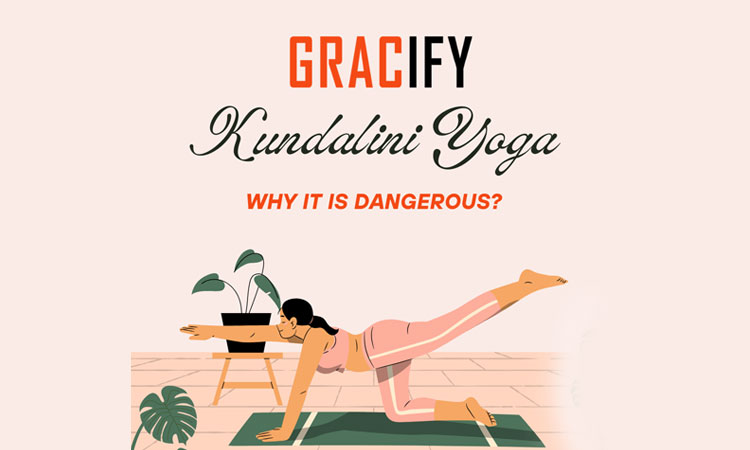
Why is Kundalini Yoga dangerous? A few people think about it but let’s try to see what is the reality behind it. And in the shortest form why it is, the major reason behind it is Kundalini Yoga which deals with the efforts to awaken the dormant energy at the base of the spine.
In this treasure of information, we will provide you with the details of Why is Kundalini Yoga dangerous, its benefits, potential risks, poses, and resources to deepen your practice. It does not matter whether you are interested in knowing its dangerous aspects or want to get knowledge regarding its instructor training, we will provide you with sufficient information.
So, let’s move towards Why is Kundalini Yoga dangerous:
What Is Kundalini Yoga?
First of all, we should to know what is kundalini yoga. It is the most ancient form of yoga that is actually introduced by Indians. It was very popular in Indian spiritual traditions and typically known as Tantric yoga.
It is said that this energy helped us to get a better understanding of ourselves and the universe. Once you will achieve the goal you can harmonize your physical body and your spiritual consciousness.
It can broaden your view to observe and understand nature that is the basic purpose of human life. The practice of Kundalini yoga deals with various steps that are designed very carefully. It includes repetitive movements (kriyas), controlled breathing (pranayama), chanting (mantras), and meditation to achieve balance. It is practiced in different sessions to enhance vitality.
Kundalini Yoga Benefits
1. Mental Stress Reduction
A crucial part of kundalini yoga is meditation as well as some breathing exercises that improve our concentration and releasing stress. It creates the ability to observe and understand the different daily challenges in a better way which leads to a calm of mind. You will get hold of your emotions which is required for proper decisions.
2. Physical Wellness
When we are moving forward from the breathing control practices then the next important step is the kriyas and asanas in kundalini yoga. These are actually the practice of physical movements again and again that improve the flexibility and elasticity of our body.
It is also helpful in maintaining blood circulation and boost up physical strength and energy. It promotes better lung functionality due to breathing exercises and enhances the oxygen and blood flow in all parts of the body in a well-balanced manner.
3. Emotional Healing
As we discussed earlier different kinds of mantras are chanted in various steps of kundalini yoga that are normally related to the Sanskrit language. Chanting mantras and meditating on the chakras helps to lead the greater physical health, emotional stability, and spiritual awakening.
Chakras are basically energy centers that are located on different points of the body and classified into seven points. It promotes emotional control and self-acceptance. Many kundalini yoga practitioners feel lighter, relaxed, happier and more connected to their inner consciousness even after a single session.
4. Spiritual Awakening
After Awakening the energy with kundalini yoga, you will be able to achieve a stronger and deeper connection to your spirituality, which leads to heightened intuitive power and a sense of purpose.
5. Managing High Blood Pressure
As we all know kundalini yoga promotes breathing exercises through which we can get control of our anger, emotions and quick responses. It produces a sense of relaxation and meditation that broadens our vision and thoughts.
It is also helpful in the balance of hormones which improves cardiovascular activities. So, we can say that it is very beneficial for those individuals who want to manage their blood pressure. This is one of the biggest benefit of kundalini yoga benefits and a number of people use it for managing blood pressure.
Kundalini yoga for high blood pressure
In this age of competition, the problems of high blood pressure, hypertension, and depression increase rapidly which can lead to severe health issues if left unmanaged. We find kundalini yoga very effective in overcoming these issues and several people use kundalini yoga for high blood pressure. It provides a natural therapy for lowering blood pressure.
1. Breathing Techniques
Pranayama is the crucial step of kundalini yoga. It is actually based on remarkable breathing techniques and plays a vital role in regulating blood pressure. Long deep breathing overcomes the release of stress hormones which is the basic technique to lower high blood pressure. On the other hand, alternate nostril breathing improves the working of the nervous system which is good for the health of our heart.
2. Stress Management
Stress is a very common problem these days which leads to various psychological issues. It also creates many serious physical problems. Stress is basically a significant contributor to hypertension, anxiety and depression. The deep meditations in kundalini yoga help to decrease cortisol levels which is very effective in eradicating these problems.
Example Practice: Sukhasana with Pranayama
Sukhasana is actually the name of the easy and simple pose of sitting and pranayama deals with deep breathing. When both things are practiced together, we find them awesome for physical, mental and emotional health. Sit cross-legged, place your hands on your knees, and close your eyes. Inhale deeply for four counts, hold for four counts, and exhale for four counts. Repeat for 5–10 minutes.
Why Is Kundalini Yoga Dangerous?
Let’s discuss some facts in detail regarding Why is Kundalini Yoga dangerous.
1. Intense Energy Awakening
As we already discussed the basic goal of kundalini yoga is to unlock the dormant energy that resides at the base of kundalini. Here we just want to inform you that this awakening needs proper guidance because its disbalanced awakening can lead to some serious problems.
2. Emotional Overload
If you have to practice the kundalini yoga without proper guidance and preparation, you can face overwhelming of emotions that will be difficult to explain. This pressure of intense emotions will be challenging to process.
3. Physical Strain
As we already know kundalini yoga relates to the kriyas of different steps. Kriyas is basically the practice of something again and again. That is not only the physical practice but it also involves the practice of breathing techniques. Sometimes various kriyas relate to the rigorous and harsh movements that cause strain on your body. You will be exhausted especially if you have any pre-existing health conditions.
How to Practice safely:
Here are some important and easy precautions that you have to keep in mind while practicing kundalini yoga:
Firstly, you have to choose certified instructors for the training of kundalini yoga.
Secondly, you must have to practice gradually and slowly according to your physical limits. Do not pressurize your body and mind.
Last but not least if you have any health concerns, you must consult your doctor before beginning your training.
Kundalini Yoga Poses
Kundalini yoga always involves sequences of kundalini yoga poses. This yoga does not emphasize the individual pose. Several foundational Asanas offered adequate training.
Easy pose (Sukhasana)
Usually, this pose is considered to be the easiest pose of kundalini yoga. It aligns the spine and opens the hips.
Cobra Pose (Bhujangasana)
Strengthening spine that helps to move the energy in the lower chakras. It generates flexibility and prepares our body for stretchy movements.
Archer Pose (Virabhadrasana Variation)
It is a very important pose to stimulate the heart chakras and improve focus and shoulder flexibility. This posture makes our legs strong and improves our determination.
Example Sequence Kundalini Yoga Poses
- The beginners initiate their practice with Sukhasana, focusing on breathing techniques.
- After sukhasana, moves towards the Cobra Pose to unlock the hidden energy.
- The unique arm movements in Archer Pose not only empower the body but also help to build confidence.
- In the practice of each pose, there are some specific breathing patterns and mantras to make them highly effective.
Kundalini Yoga Books
If we are going to talk about the kundalini yoga lovers and practitioners who want to gain the proper knowledge and deeper understanding, there are some considerable kundalini yoga books which present adequate information.
Here are some valuable suggestions for kundalini yoga books:
“The Kundalini Yoga Experience” by Guru Dharam Singh Khalsa and Darryl O’Keeffe
A perfect choice for beginners as the book provides the basics of yoga. It makes us aware of its benefits and dangers.
“Kundalini Yoga: Unlocking the Secrets to Happiness, Love, and Miracles” by Kathryn McCusker
This guide provides a treasure of information regards spiritual growth and the role of consciousness in the better understanding of our inner selves.
“Wheels of Life” by Anodea Judith
This book is not typically about kundalini yoga. It actually provides information about chakra theory which is a crucial part of kundalini yoga.
Kundalini Yoga Instructor Training
If you want to become a successful and certified kundalini yoga instructor then firstly you must be the expert in each and every pose and also have proper information on mantras to maximize the effect. After expertise yourself, you will be able to guide the others sufficiently.
Components of Kundalini Yoga Instructor Training:
Theory and Philosophy
First and foremost, the need is to know about its history, discovery and spiritual context. Then the next priority is the knowledge of the chakra system that is an important part of kundalini yoga.
Practical Training
Get expertise in all the poses and have the proper information of kriyas and breath-controlling techniques. You also must be well aware of meditation.
Teaching Skills
You ought to know how to manage the whole training session and guide your students in safe and sound way.
Conclusion
In short, we can say that kundalini yoga is the best way to get mental, physical, and spiritual benefits. It is not only helpful to maintain your physical fitness but also a source of mental and spiritual health. It overcomes the dangers of psychological issues like anxiety and depression. It regulates the blood pressure and promotes the intuitive spirits. It activates the dormant energy that is necessary to understand our purpose of existence. It creates the habit of observation and meditation which is helpful in the betterment of living.
When you have to practice Kundalini yoga under proper guidance, you will incredibly start your journey of self-discovery and holistic wellness. You will start to find the secrets of the universe that produce the real discipline in our lives.
Share your thoughts in our comments section regarding Why is Kundalini Yoga dangerous.
-

 Yoga1 year ago
Yoga1 year agoNatural Rubber vs Cork Yoga Mat – which is Better?
-
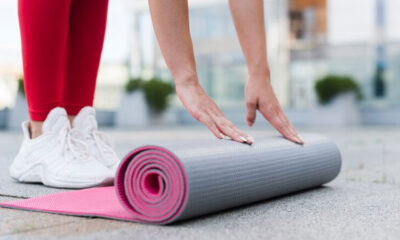
 Yoga1 year ago
Yoga1 year agoTPE vs EVA Yoga Mat & NBR vs PVC Yoga Mat
-

 Yoga1 year ago
Yoga1 year agoHow to Roll Up a Yoga Mat? For Long Lasting
-
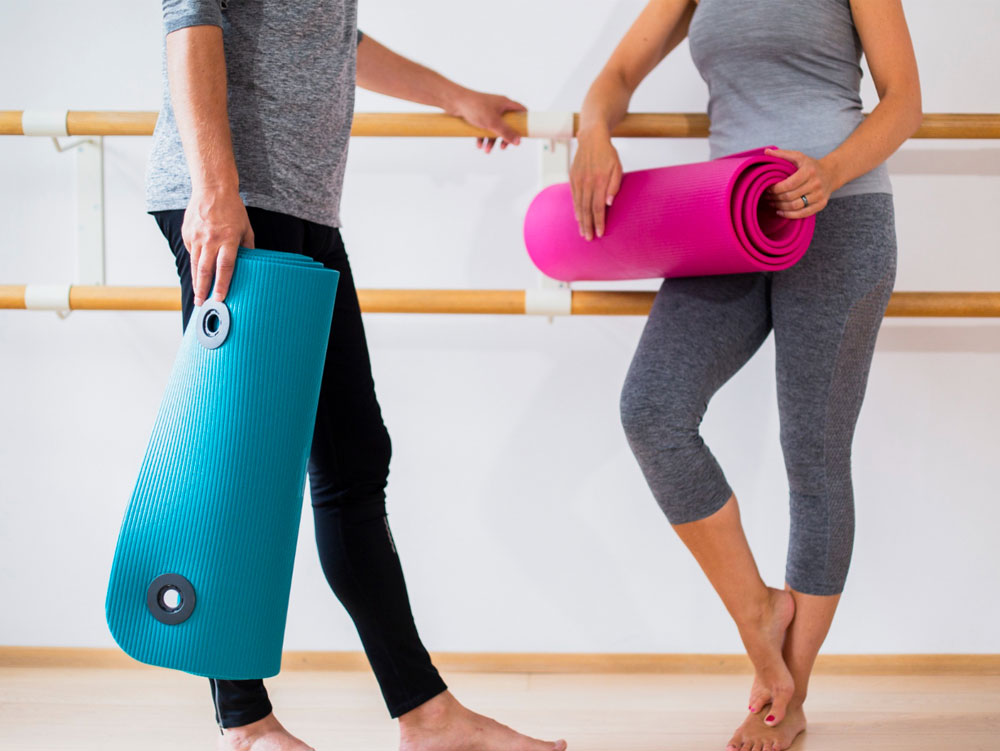
 Yoga1 year ago
Yoga1 year agoPilates Mat vs Yoga Mat
-

 Yoga1 year ago
Yoga1 year agoHow to Clean / Wash Yoga Mat
-
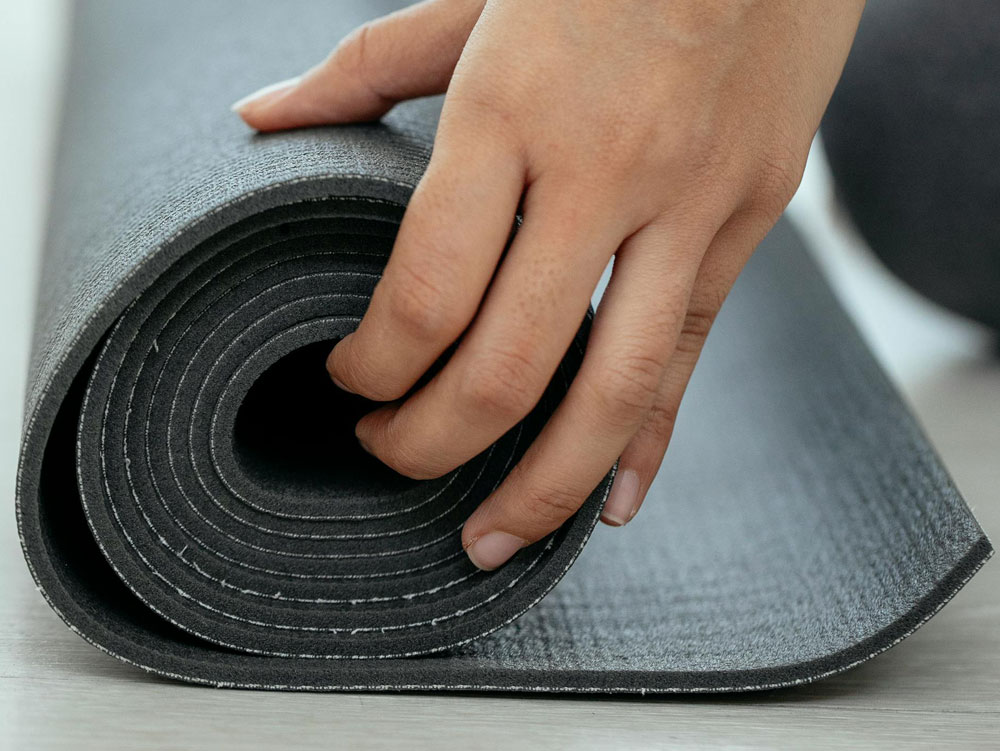
 Yoga1 year ago
Yoga1 year agoWhich Material is Best for Yoga Mat
-
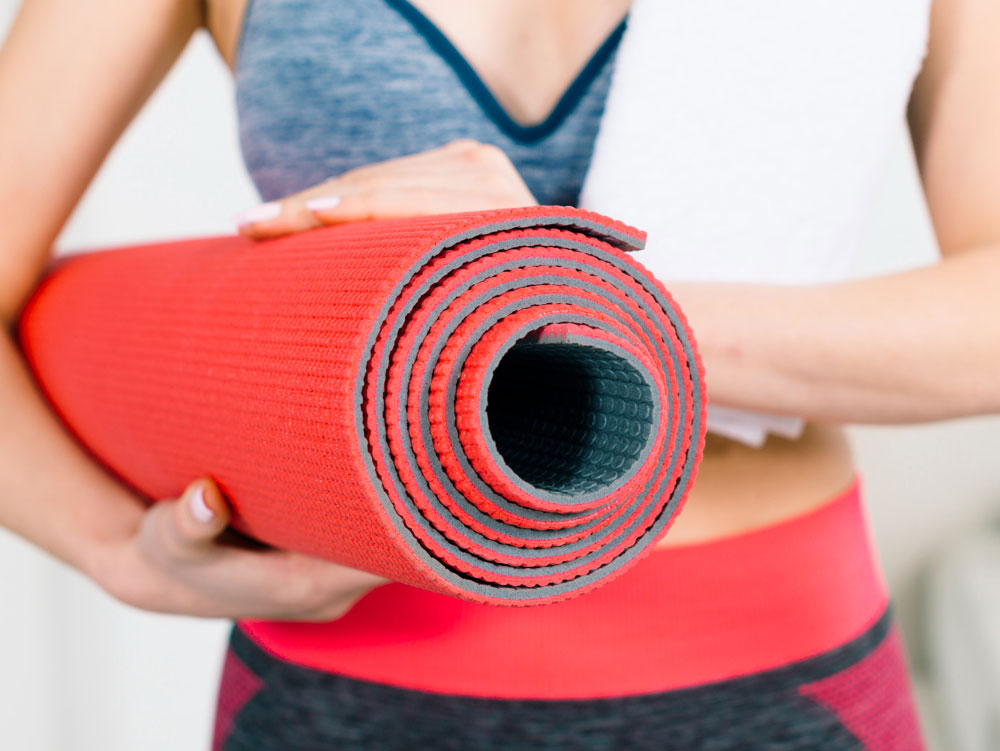
 Yoga1 year ago
Yoga1 year agoWhich is the Best Yoga Mat Thickness?
-
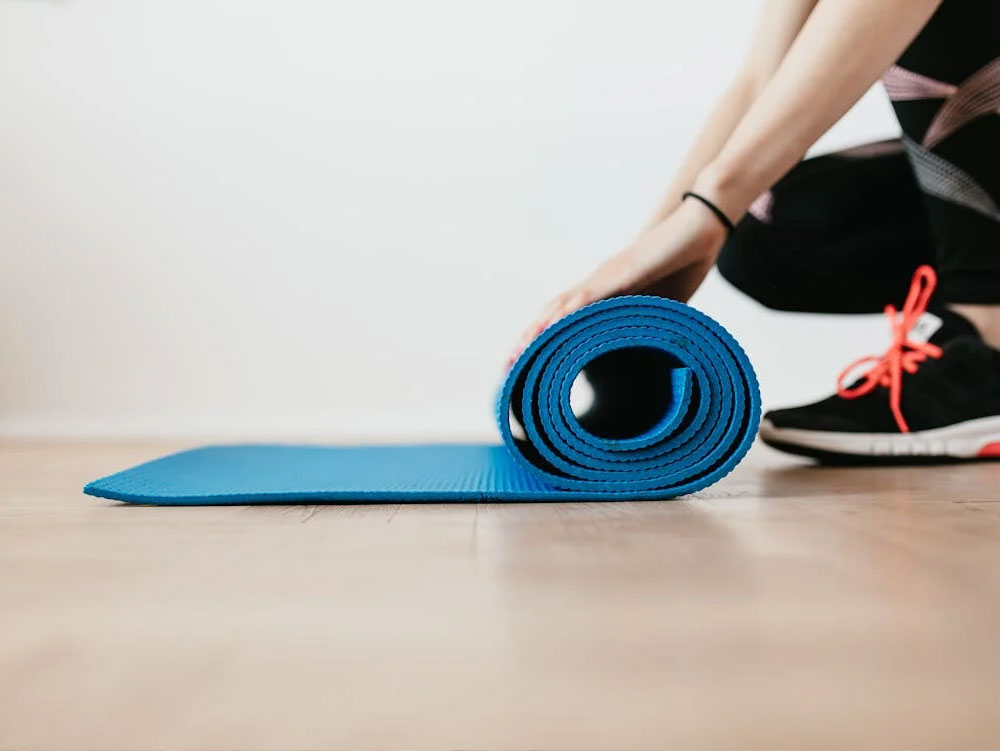
 Yoga1 year ago
Yoga1 year agoWhich is the Best Yoga Mat Size?











